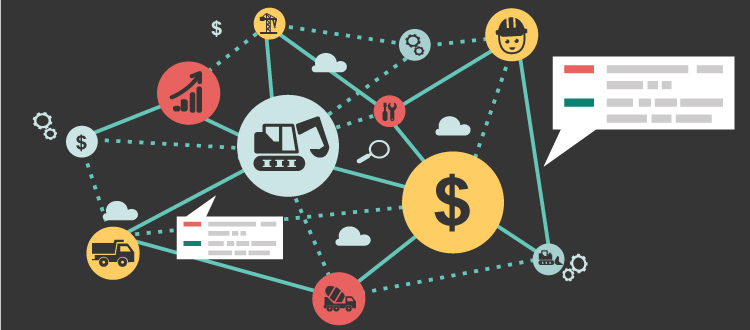How Cloud-Based Construction Accounting Tools Can Benefit Your Business
How Cloud-Based Construction Accounting Tools Can Benefit Your Business
Blog Article
A Comprehensive Guide to Building And Construction Accounting: Enhance Your Financial Monitoring
Effective economic management is critical in the building market, where the complexities of project-based earnings and expenditures can dramatically influence total earnings. By employing finest techniques in monetary reporting and analysis, stakeholders can not only boost functional effectiveness but additionally alleviate possible threats.
Recognizing Building And Construction Audit
Understanding building audit is important for the effective administration of funds in the building and construction industry. This specific branch of accounting addresses the unique difficulties faced by construction companies, consisting of project-based profits recognition, price tracking, and conformity with regulative requirements. construction accounting. Unlike typical audit, building audit requires a distinctive approach to manage the complexities related to long-term contracts and rising and fall prices
Secret components of building audit consist of precise income acknowledgment, which commonly counts on the percentage-of-completion method or completed-contract technique, depending upon the project's nature. This ensures that monetary statements reflect true efficiency and profitability in time. Work setting you back plays an important role, allowing firms to track expenditures associated with specific projects, which helps in identifying earnings and resource appropriation.
One more critical element is the management of money flow, which is frequently influenced by payment routines and delays in receivables. Effective capital management makes sure that construction firms can satisfy operational requirements and purchase future tasks. construction accounting. Inevitably, understanding construction audit equips firms with the devices necessary to make enlightened economic choices, minimize dangers, and boost general functional efficiency in a competitive sector
Work Costing and Budgeting

Budgeting, on the various other hand, serves as an economic roadmap for jobs. It involves setting monetary limits and designating sources to different task components, consequently establishing a framework against which actual costs can be gauged. Effective budgeting requires detailed evaluation and forecasting, thinking about historic information, market trends, and prospective risks.
With each other, work setting you back and budgeting offer the required tools for building and construction firms to keep an eye on economic performance, identify differences, and adjust strategies as needed. By applying durable job costing methods and sticking to well-structured spending plans, business can improve their operational performance, reduce monetary dangers, and eventually improve their success in an affordable industry. Thus, these methods are important for sustaining lasting success within the construction sector.
Tracking Costs and Income
Precisely tracking costs and profits is crucial for building companies to preserve monetary wellness and ensure project practicality. Efficient monitoring enables companies to check task performance, identify cost Check This Out overruns, and make notified financial decisions. Carrying out a methodical approach to taping all economic purchases is critical to attaining this goal.
Using construction accounting software application can significantly enhance the tracking process. These devices promote real-time monitoring of expenditures, consisting of labor, products, and subcontractor costs, while also recording revenue created from task landmarks and customer settlements. By classifying expenses and revenue streams, companies can obtain insights into productivity and money circulation.
Assimilation of expense tracking with job costing makes it possible for firms to examine the economic effect of specific projects. This technique makes certain that all prices are allocated appropriately and aids in recognizing trends that blog here might impact future tasks. Regularly integrating accounts and evaluating budgets against real costs can help prevent financial disparities and preserve financial self-control.
Financial Coverage and Evaluation
Economic coverage and analysis play a pivotal duty in the building market, supplying stakeholders with important understandings right into a firm's economic efficiency and operational performance. Accurate monetary records, consisting of annual report, earnings declarations, and money circulation declarations, are basic for examining the wellness of a building company. These records aid identify fads, examine task earnings, and assist in educated decision-making.
In construction audit, monetary analysis exceeds mere reporting; it includes scrutinizing financial information to discover underlying patterns and abnormalities. Key efficiency indications (KPIs), such as gross revenue margins, task completion rates, and return on financial investment, act as benchmarks to determine functional success. Routinely analyzing these metrics allows firms to recognize areas needing enhancement, maximize source allotment, and improve job management strategies.
In addition, effective monetary coverage fosters openness and develops count on with stakeholders, consisting of customers, vendors, and financiers. By keeping strenuous economic oversight, building and construction companies can minimize threats, make sure conformity with governing needs, and ultimately drive sustainable development. Hence, a durable monetary coverage and analysis framework is essential for browsing the intricacies of the building and construction landscape and accomplishing long-lasting success.
Best Practices for Success

Second, adopting a constant method to task setting you back is crucial. This involves carefully tracking all expenses connected with each project, including labor, materials, and overheads. Regularly examining task costs versus initial price quotes assists identify variations early, enabling prompt corrective activities.
Third, preserving rigorous paperwork methods guarantees conformity with guidelines and streamlines audits. This consists of maintaining in-depth records of contracts, change orders, invoices, and invoices.
In addition, purchasing personnel training is crucial - construction accounting. Making certain that workers are fluent in accounting principles, software use, and market standards can substantially boost performance and accuracy in monetary coverage
Final Thought
Reliable monetary administration in the building and construction market requires a thorough understanding of special accountancy concepts. Stressing accurate job costing, budgeting, and thorough monitoring of expenses and revenue is crucial for educated decision-making. Durable monetary coverage and analysis make it possible for building experts to determine fads and evaluate efficiency. By adhering to ideal techniques, companies can improve functional effectiveness, mitigate threats, and inevitably accomplish enhanced profitability, ensuring long-lasting success in an affordable market.
Report this page